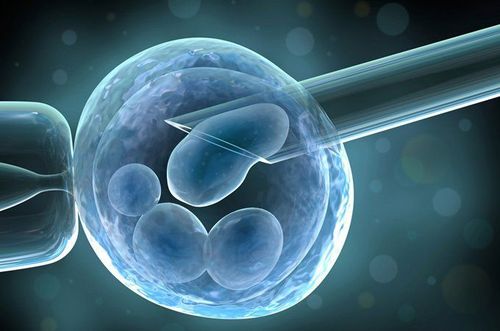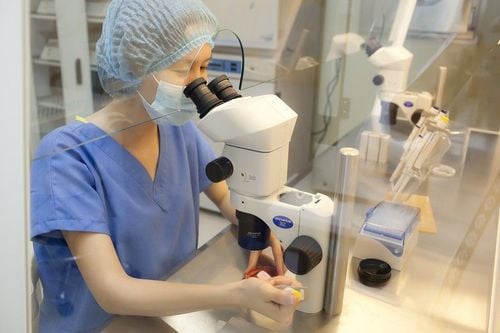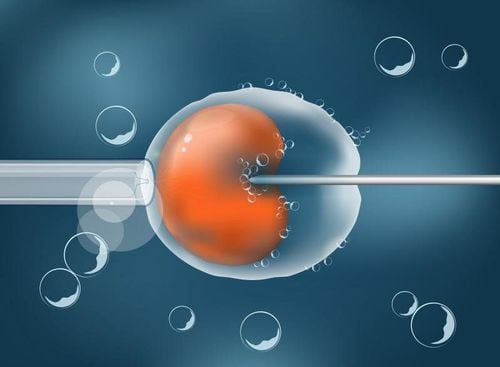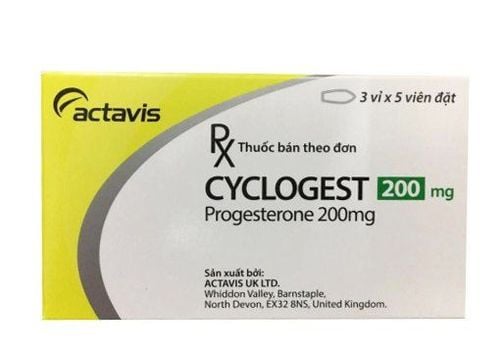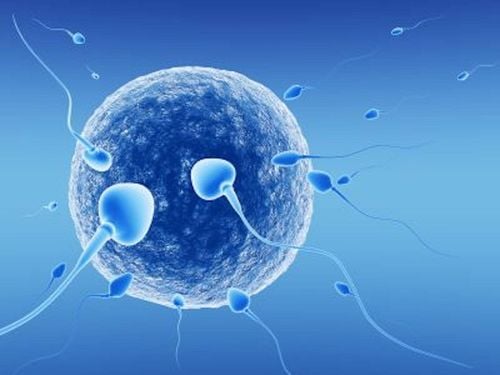This is an automatically translated article.
“Hello doctor, I am 34 years old this year, and my husband is 40 years old. We've been married for over a year but still haven't seen a baby. Last year, my wife and I went to the doctor. My husband is normal, and I have blocked fallopian tubes. I've gone through it, but so far I haven't seen any progress. I did some research online and found many people recommending IVF. So please tell me how that method and high success rate. Thank you doctor”
First of all, IVF is a method where the wife's eggs are fertilized with the husband's sperm in a test tube (outside the body). When the embryo forms and develops, it is transferred back to the woman's uterus to implant and develop into a fetus.
In vitro fertilization is one of the methods of choice for infertility treatment. The overall success rate is about 40%, which varies depending on the age of the infertile couple and the cause of the infertility.
1. In vitro fertilization process
Step 1: Physical examination, fertility assessment Recommended video:How does in vitro fertilization work?
Test in the wife
Endocrine test Endocrine test: quantify levels of sex hormones (estrogen, progesterone,...), gonadal hormones (LH, FSH) to assess the status of sexual activity. Hypothalamic - Pituitary - Ovarian axis as well as assessment of a woman's ovarian reserve (AMH, FSH, LH).
Testing for sexually transmitted diseases Take blood for testing to identify sexually transmitted diseases: HIV, syphilis, hepatitis B, vaginal discharge for Chlamydia,. ..
Gynecological ultrasound and baseline follicular count on both ovaries on the first day of the menstrual cycle. Gynecological ultrasound helps to detect gynecological abnormalities such as uterine fibroids, ovarian cysts and congenital abnormalities of female genital tract or polycystic ovaries,...
Test in husband
Semen map Through semen test to determine: low sperm count, weak sperm, abnormal sperm or no sperm at all.
Other tests Blood sampling to identify sexually transmitted infections: Hepatitis B, HIV, syphilis,...
In case the husband has no sperm, further specialized tests must be carried out. Other differences such as quantitative sex hormones, scrotal ultrasound,...
Step 2: Ovarian stimulation The wife will be injected with ovarian stimulation drug continuously every day, usually from 9-11 days.
During the time of injection, the wife will go to ultrasound and blood tests according to the appointment to monitor the growth of the follicles and adjust the medicine according to each person's response. When the follicle reaches the prescribed size, the wife will be given the last injection to stimulate the egg to mature (ovulation injection), which needs to be injected on time.
Step 3: Egg retrieval 36-40 hours after the last injection, the wife fasted in the morning, went to the hospital to collect eggs. The patient will be anesthetized so he will not feel any pain. After egg retrieval, the wife stayed at the hospital to monitor her health for about 2-3 hours.
After aspiration of eggs and follicular fluid, eggs will be examined and separated under a microscope.
At the same time, the husband collects sperm for routine fertilization (IVF) or intracytoplasmic sperm injection (ICSI).
Step 4: Fertilization Eggs and sperm are transferred to the Labo room for fertilization and embryo creation. Embryos will be cultured outside for 2-5 days.
The number of qualified embryos will be transferred to the wife's body (fresh embryo transfer), the remaining embryos will be frozen. There are also many cases where, for professional or personal reasons, entire embryos will be frozen. During this time, the wife will take oral and vaginal medications to prepare for the embryo transfer.
Step 5: Embryo transfer The doctor will inform about the quantity and quality of embryos formed. After that, the number of embryos transferred to the uterus, the remaining embryos that can be frozen will be agreed between the two sides.
Embryos will be transferred 2-5 days after egg retrieval. If the uterine lining is thick enough, of good quality, favorable for the implantation and development of the embryo after being placed in the uterine cavity, the doctor will perform an embryo transfer.
The wife will lie down for 2-4 hours in the hospital for observation and then go home. After the embryo transfer, the wife continued to use hormonal drugs and rested and lived according to the doctor's instructions.
In case of embryo transfer, the wife will have an ultrasound and medication to monitor the uterine lining for 14-18 days starting from the 2nd day of the next menstrual cycle, then the doctor will choose the date suitable for transfer of stored embryos.
Recommended video:
How long does it take for the embryos to implant after embryo transfer?
Step 6: Pregnancy test Two weeks after embryo transfer, the wife goes to the hospital for a blood test (beta HCG test). The concentration of beta HCG after 2 weeks of embryo transfer if it is greater than 25 IU/l is pregnant, this concentration is high or low depending on each person's body and the number of embryos implanted after transfer.
If the concentration after 2 days and a half increases or more, the fetus is developing, the mother continues to take prenatal medicine until the day of ultrasound to determine the gestational sac and fetal heart. If the concentration after 2 days does not increase or decrease, continue monitoring. In case of biochemical pregnancy (miscarriage) when the beta level returns negative (less than 5 IU/l). When not pregnant but still have embryos, the wife can continue to use the embryos to transfer to the uterus in the next cycles without repeating the previous steps.
Step 7: Fetal monitoring Periodic fetal ultrasound to check the fetus's healthy development does not combine with clinical examination.
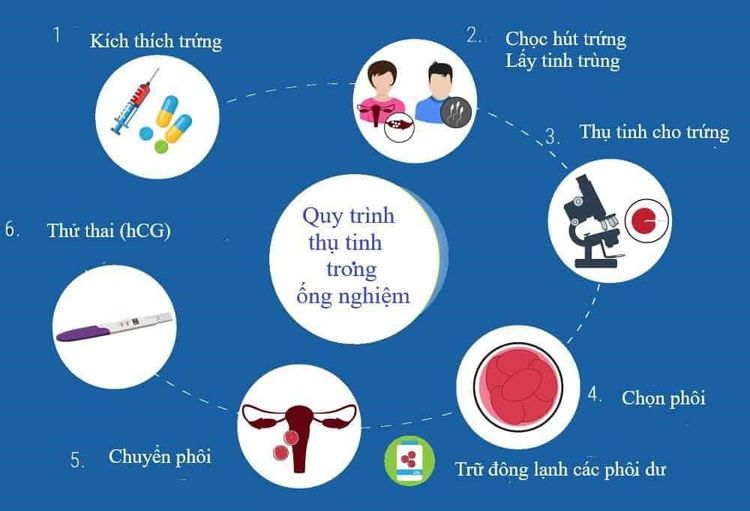
2. Factors affecting the success rate of in vitro fertilization
Worldwide, the success rate of IVF is about 40-45%. In Vietnam, this rate is about 35-40%. This success rate will drop from 2 to 10% for older women (after age 40) and depends on many different factors.2.1. The couple's nutrition and daily life Diet full of nutrients, protein-rich foods: Chicken, beef, pork, oysters, shrimp, crab, milk,..., eat a lot vegetables, fiber, fruit. For the wife, you should choose foods containing a lot of folic acid: Bean sprouts, cereals, fresh fruits such as oranges, grapefruit, ... And foods rich in omega 3: Fish oil, vegetable oil,... Limit the use of stimulants: Alcohol, beer, tobacco,... Limit sex during this time to avoid stimulating uterine contractions affecting the embryo Take a gentle bath with warm water, Hygiene and cleanliness of the intimate area Gentle exercise, health improvement: yoga, walking,... Keeping a comfortable mood, avoiding stress, stress A woman in a good, happy mood has a high success rate. The efficiency of the method is also increased. On the contrary, if the wife is worried and stressed, the success rate will also decrease significantly. Because when a woman has psychological instability, it will lead to strong uterine contractions, making it difficult for the embryo to implant.
2.2. No sexually transmitted diseases Before in vitro fertilization, the couple is checked to see if they are healthy enough to perform. If the woman's health is normal, and the man's sperm is strong, the probability of success will be very high.
2.3. The younger the age, the higher the chance of success. The number and quality of eggs that meet the criteria (along with the sperm that form a healthy embryo) will decrease over time, especially as a woman passes the age of 35. Egg quality and The more sperm, the better, the more embryos formed, the more chances of embryo transfer.
2.4. Early treatment All couples are screened for infertility before IVF.
After a year, couples who do not use any contraceptive methods but still have not had children should go to the doctor soon to find out the cause and treat it promptly.
2.5. Equipment, machinery and technical experience of doctors In vitro fertilization includes many complicated steps, requiring doctors and experienced technicians to decide on treatment regimens, how drugs are used,...
In vitro fertilization requires a laboratory that meets strict standards: sterility, suitable temperature, humidity, air quality must be kept at a minimum level at all times. ...
Established in November 2014, 4 years of operation now, Vinmec IVF fertility center has provided reproductive support for more than 1000 infertile couples with clinical pregnancy rates always reach between 45%-50%. This is the same rate as developed countries such as the US, UK, Australia, etc. In which, the first case of egg poking at IVF Vinmec was personally performed by Prof. Dr. Nguyen Viet Tien - a leading expert in the field. This implements
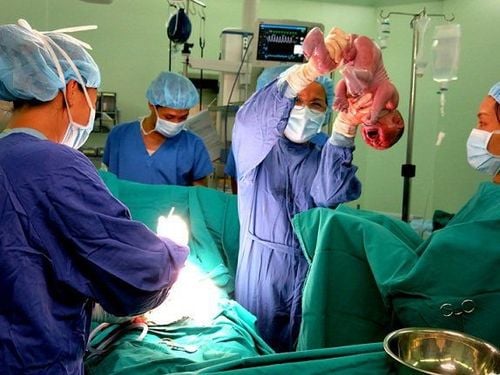
Please dial HOTLINE for more information or register for an appointment HERE. Download MyVinmec app to make appointments faster and to manage your bookings easily.





